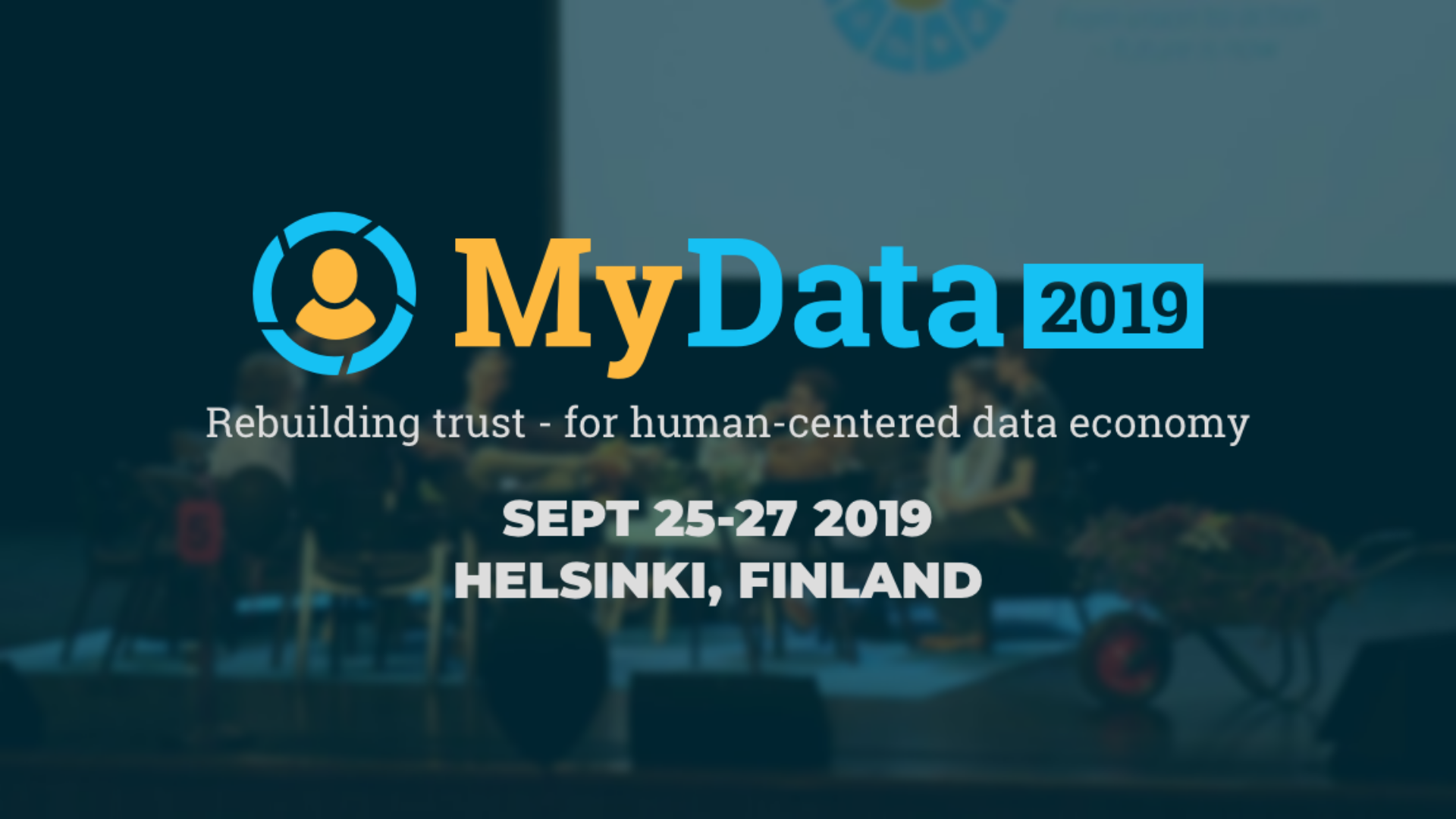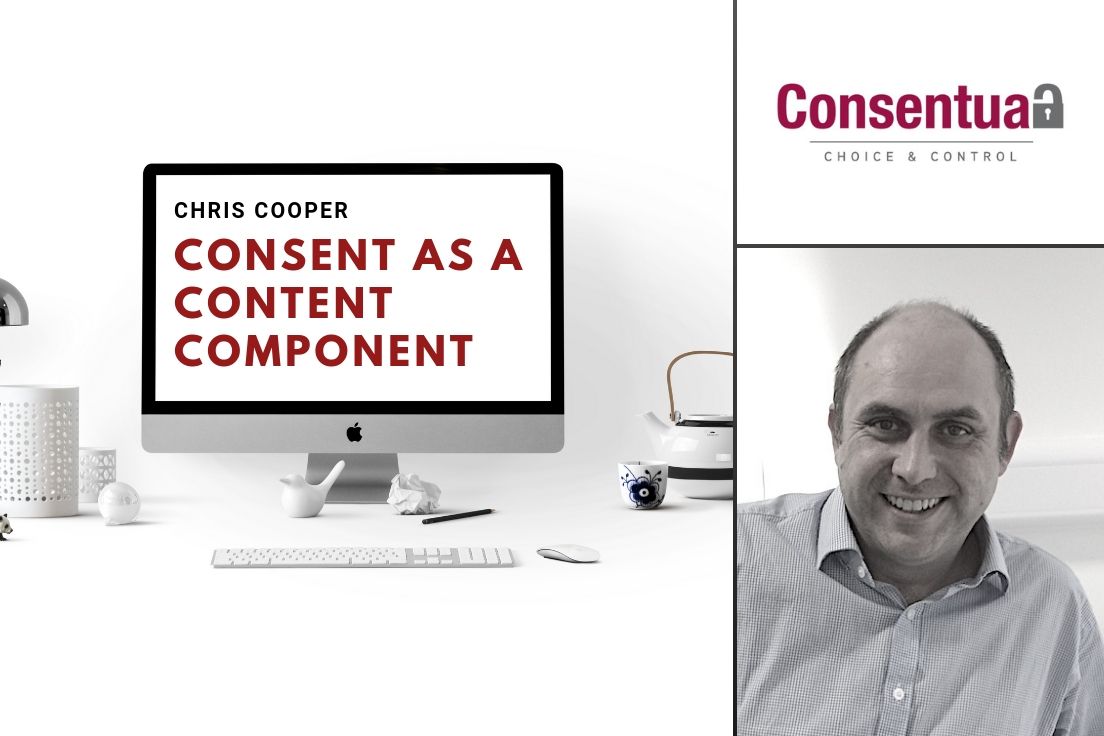02 Oct 2019

Helsinki, 27th Sept 2019
Last week, Consentua was again part of the Kantara Consent Receipt demo, this time at MyData in Helsinki where the first interoperability demonstration took place last year.
Building on functionality that we’ve rolled out across our platform, the demo shows how third-party tools - like web browsers and data management platforms - can consume consent receipts from Consentua to give data subjects unrivalled control over their personal data.
Dr Richard Gomer, product director for Consentua, said “Consentua was one of the first platforms to adopt the Kantara Consent Receipt format, and we’re proud to be at the forefront of giving people control over their personal data and helping our customers put an end the bad consent practices that destroy brand trust and undermine our digital rights.”
To find out more about Consentua visit www.Consentua.com or call 02392 160640
17 Jul 2019

Consent has to be a component of web service delivery in the world of CDN (Content Delivery Network)
The new reality
With data commissioners now seeking fines for poor data protection practice, the old way of indiscriminately sharing user data is over. The law gives the user more control and the old business model relying on the targeting of adverts is about to change.
The new reality is that a brand will often need to have consent to use an individual’s details to target an advert at them. Those companies that excel at managing consent will be the winners.
This is because a consented-to engagement is a much more valuable lead. It demonstrates an engaged user, itching to become a customer. Not as is commonly the case today, a harangued and hassled user, plagued by adverts long after a purchase has been made.
Rather than today’s scenario where the intermediaries sat in the middle of the conversation between brand and customer consider themselves king, the brand that owns this consent is now king.
A customer is more likely to give a brand their consent rather than an unknown entity. The brand has a reputation to protect and will behave with that reputation in mind - more likely to conform to customer expectation. The intermediaries whole purpose is to push the unconsented-to personal data to the highest bidder.
 Believe me, what it boils down to is trust - Do I believe as a consumer that I trust your brand with my personal data?
Believe me, what it boils down to is trust - Do I believe as a consumer that I trust your brand with my personal data?
This is a personal decision and different people will have different thresholds as to what personal data they will share and when. However, trust is fickle. It takes time to build but can be evaporated in seconds.
What can be a better way of proving brand trust than when a user says “Yes, here is my consent, for now, to have a digital advert displayed. But when I remove this consent, the advert stops”. And the brand then ensures this happens.
It is not the fact that people will turn off the advert and brand engagement. The marketers will continue to make sure customers want to be part of your world. What people want, and are now given by law, is choice and control.
The role of CDN
When we visit a web page it is usually built in front of our eyes by a series of background chats to a variety of services. Some benign, some positive, some we should know more about and others we should be raising our eyebrows at.
What needs to happen within this process is that the user’s consent is checked to enable the right content to be displayed. How though to do this?
Simple, access a consent service that holds the consent. This service will be able to then inform the digital advertiser as to what content can be displayed. The service needs to be fast, reliable and secure.
In effect, the service should be seen as just another component of the world of CDN.
Who owns the consent?
In the new reality when a user visits a website, the adverts they see should be consented to. How though do we go about this? Who owns this consented to engagement? The publisher, the brand or the one serving the ad?
If we assume the ad is owned by a brand and the brand is looking for the engagement of a user, then the brand owns the consent. If the publisher has a contract to deliver content to the end-user, then the consent is owned by the publisher, who can then ask for permission to deliver an advert to 3rd parties. The user can then agree on a case by case basis.
What is the role of the intermediary? Well, they have a new role, matching consented-to content to actual delivery. They can become the aggregators of consent and trusted brands in their own right.
Getting consent and using it
The first part is to capture the user’s consent. The second is to then make use of this consent.
This is where consent management tools take centre stage. They are usually deployed within the customer sign up form, or as a pop-up on the website. Crucially, the best tools allow this to happen at the point of interaction with the user - ensuring that there is the very best chance of consent being granted.
A consent management tool creates a standards-based consent receipt. It allows both the user and the digital advertising partner access to this consent receipt. The process is much more transparent leading to increased trust between the user, the brand and the advertising partner.
You can also track how your user engagement stats change using a new set of statistics -
- Number & growth of new consent receipts
- The conversion rate of consents to sales
- Retention of consent over time
Arguably these are more useful indicators of brand health than our current obsession with click rates. Having a consent receipt will be a better indicator of brand engagement and brand trust.
CDN the Consent
So now the consent receipt is there to be used, instruct your digital advertising partner to use the consent receipt as the basis for what they serve up in terms of adverts.
Previously it was pay-per-click. Now it is pay-per-consent. The beauty of consent management is that the consent service owner purchases a large pool of consents for exactly this purpose. To encourage that conversation between customer and brand whilst recognising that the customer is in control.
Now when the web page is served to the end-user, the digital advert provider goes to the consent management service, checks the consent, and serves the advert depending on the result. Just like the other CDN based services.

Next Step
If you want to know more, would like a demo of our Consentua consent management tool or just want a discussion on promoting
your brand in a consented to fashion, then please get in touch at www.consentua.com or email us at [email protected]


 Believe me, what it boils down to is trust - Do I believe as a consumer that I trust your brand with my personal data?
Believe me, what it boils down to is trust - Do I believe as a consumer that I trust your brand with my personal data?